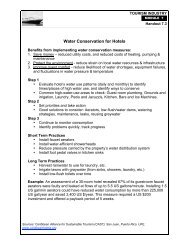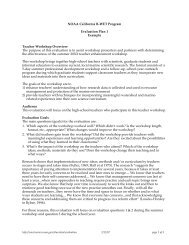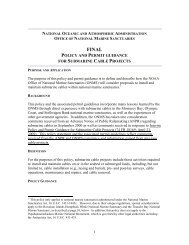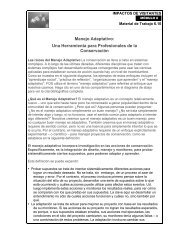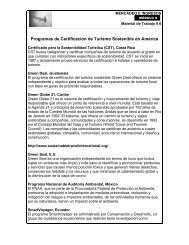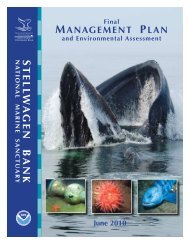The Hawaiian spinner dolphin, Stenella longirostris: Effects of tourism.
The Hawaiian spinner dolphin, Stenella longirostris: Effects of tourism.
The Hawaiian spinner dolphin, Stenella longirostris: Effects of tourism.
You also want an ePaper? Increase the reach of your titles
YUMPU automatically turns print PDFs into web optimized ePapers that Google loves.
22<br />
<strong>The</strong> highest frequency <strong>of</strong> aerial activities during the day occurs during arousal<br />
from rest (Norris and Dohl 1980). In completely quiescent <strong>spinner</strong> <strong>dolphin</strong> schools,<br />
arousal was marked by an abrupt aerial behavior such as a headslap or spinning leap<br />
(Norris and Dohl 1980). Schools were <strong>of</strong>ten fully alert within 10 minutes, with aerial<br />
activities occurring throughout the <strong>dolphin</strong> school (Norris and Dohl 1980). Swimming<br />
speed quickens as <strong>spinner</strong>s enter a "zigzag swimming" period.<br />
Zigzag swimming consists <strong>of</strong> a period where <strong>dolphin</strong>s exhibit great changes in<br />
their swimming speed, vocalizations, and social behavior while swimming back and<br />
forth within the bay. This activity culminates with the <strong>dolphin</strong>s swimming toward the<br />
margin <strong>of</strong> the bay, and then back and forth, repeatedly entering and exiting the bay<br />
(Norris and Dohl 1980). Schools begin to traverse deep water as individual <strong>dolphin</strong>s<br />
move towards the mouth <strong>of</strong> the bay at high speed. Dolphins gradually slow down as the<br />
mouth <strong>of</strong> the bay is reached and may mill about before moving back into the bay. At<br />
this point, <strong>spinner</strong> <strong>dolphin</strong>s may return to their restful behavior within the bay or turn<br />
around and again swim towards deep water. Zigzag swimming typically lasts two to<br />
three hours and ends with fast swimming that takes the school beyond the confines <strong>of</strong><br />
the bay. Aerial activities, aggressive chases and other social behaviors including<br />
mating are evident as the school travels towards the feeding grounds in deeper oceanic<br />
waters. As the school reaches the feeding grounds, subsynchronous dives begin (Norris<br />
and Dohl 1980, Norris et al. 1994a).





